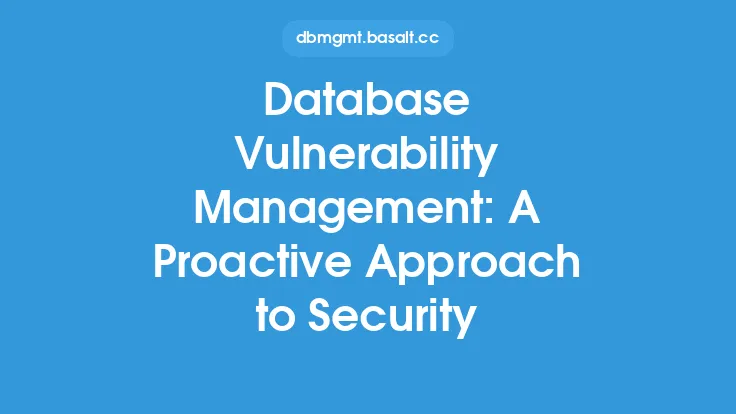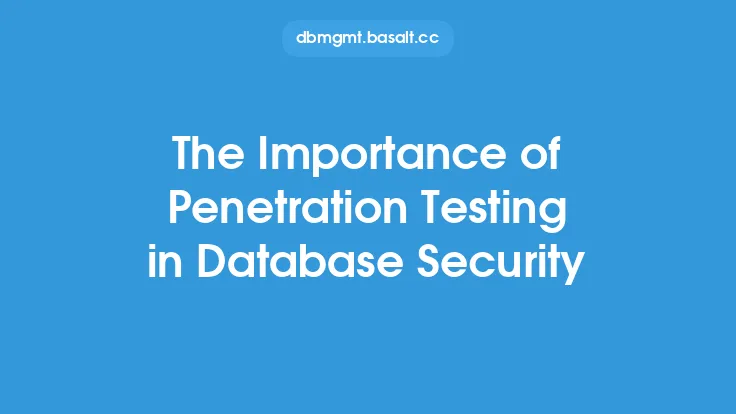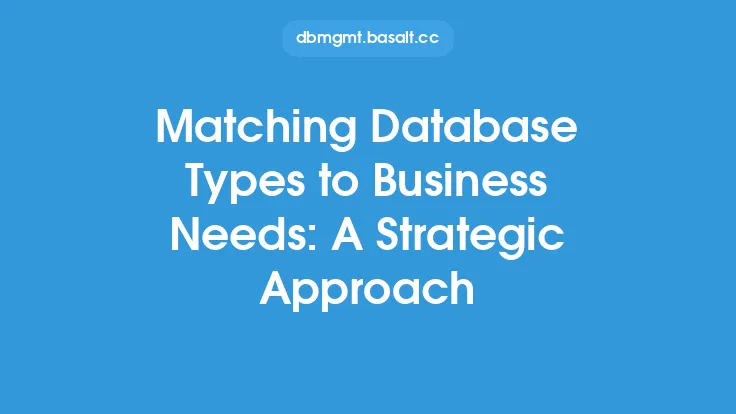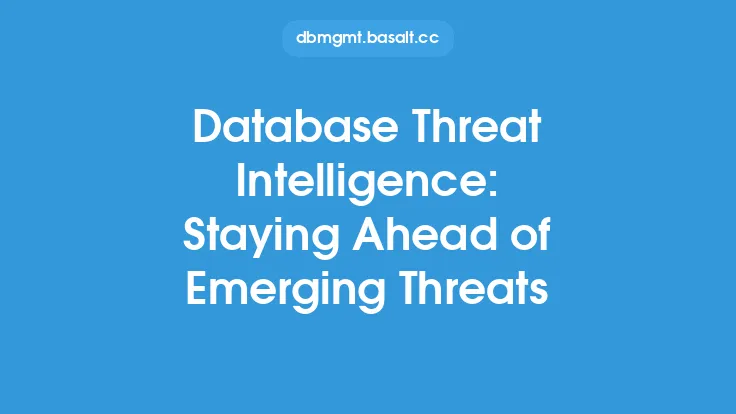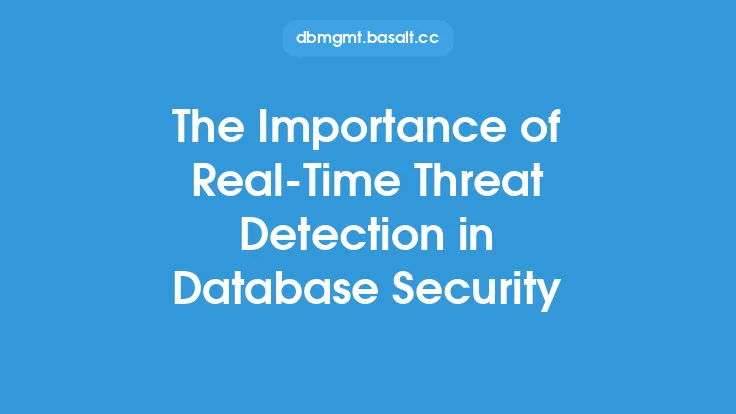As databases continue to be a critical component of modern organizations, the importance of securing them against potential threats cannot be overstated. One approach to database security that has gained significant attention in recent years is threat hunting. Threat hunting involves proactively searching for and identifying potential security threats within a database, rather than simply relying on traditional security measures to detect and respond to incidents. In this article, we will explore the concept of threat hunting in databases, its benefits, and the techniques and tools used to implement it.
Introduction to Threat Hunting
Threat hunting is a proactive approach to security that involves actively searching for potential security threats within a database. This approach is based on the assumption that traditional security measures, such as firewalls and intrusion detection systems, are not enough to detect and prevent all types of threats. Threat hunting involves using a combination of human expertise and technology to identify potential security threats, such as malicious activity, unauthorized access, and data breaches. The goal of threat hunting is to detect and respond to potential security threats before they can cause harm to the database or the organization.
Benefits of Threat Hunting
Threat hunting offers several benefits to organizations, including improved security, reduced risk, and increased incident response efficiency. By proactively searching for potential security threats, organizations can detect and respond to incidents more quickly, reducing the potential impact of a security breach. Threat hunting also helps organizations to improve their overall security posture, by identifying and addressing vulnerabilities and weaknesses that could be exploited by attackers. Additionally, threat hunting can help organizations to reduce the cost of incident response, by detecting and responding to incidents more quickly and efficiently.
Techniques and Tools for Threat Hunting
Threat hunting involves using a combination of techniques and tools to identify potential security threats. Some common techniques used in threat hunting include anomaly detection, behavioral analysis, and network traffic analysis. Anomaly detection involves identifying patterns of activity that are outside the norm, such as unusual login times or locations. Behavioral analysis involves analyzing the behavior of users and systems to identify potential security threats, such as suspicious file access or modification. Network traffic analysis involves analyzing network traffic to identify potential security threats, such as malicious packets or unusual communication patterns.
Some common tools used in threat hunting include security information and event management (SIEM) systems, intrusion detection systems (IDS), and threat intelligence platforms. SIEM systems provide a centralized platform for collecting, analyzing, and storing security-related data, such as logs and network traffic. IDS systems provide real-time monitoring and analysis of network traffic, to identify potential security threats. Threat intelligence platforms provide a centralized platform for collecting, analyzing, and storing threat intelligence, such as information on known threats and vulnerabilities.
Database-Specific Threat Hunting
Threat hunting in databases requires a specialized approach, due to the unique characteristics of databases. Databases are complex systems that store and manage large amounts of sensitive data, making them a prime target for attackers. To hunt for threats in databases, organizations need to use specialized tools and techniques, such as database activity monitoring (DAM) and database vulnerability scanning. DAM involves monitoring database activity, such as queries and transactions, to identify potential security threats. Database vulnerability scanning involves scanning the database for known vulnerabilities and weaknesses, such as unpatched software or misconfigured settings.
Challenges and Limitations of Threat Hunting
Threat hunting is a complex and challenging process, requiring significant expertise and resources. One of the main challenges of threat hunting is the sheer volume of data that needs to be analyzed, making it difficult to identify potential security threats. Additionally, threat hunting requires a deep understanding of the database and its underlying systems, as well as the potential threats and vulnerabilities that exist. Another challenge of threat hunting is the potential for false positives, where legitimate activity is misidentified as a security threat.
Best Practices for Implementing Threat Hunting
To implement threat hunting effectively, organizations should follow several best practices. First, organizations should establish a dedicated threat hunting team, with the necessary expertise and resources. Second, organizations should implement a threat hunting platform, such as a SIEM system or a threat intelligence platform. Third, organizations should develop a comprehensive threat hunting strategy, that includes techniques such as anomaly detection and behavioral analysis. Finally, organizations should continuously monitor and evaluate their threat hunting program, to ensure that it is effective and efficient.
Conclusion
Threat hunting is a proactive approach to database security, that involves actively searching for potential security threats. By using a combination of techniques and tools, organizations can detect and respond to incidents more quickly, reducing the potential impact of a security breach. While threat hunting is a complex and challenging process, it offers several benefits, including improved security, reduced risk, and increased incident response efficiency. By following best practices and using specialized tools and techniques, organizations can implement effective threat hunting programs, to protect their databases and sensitive data.
